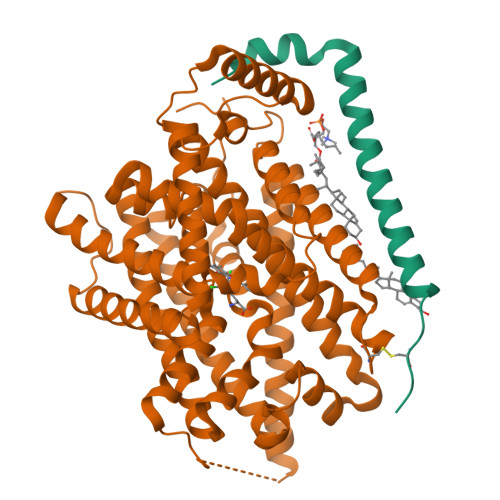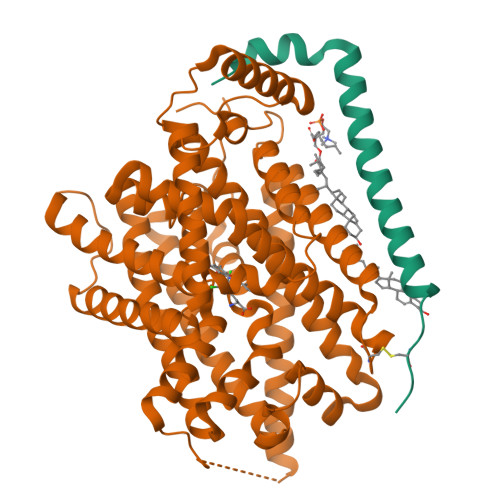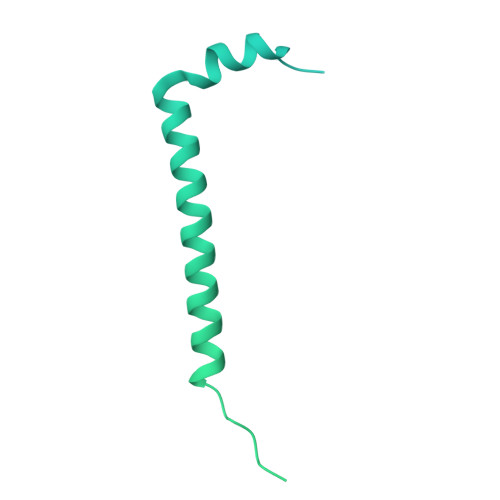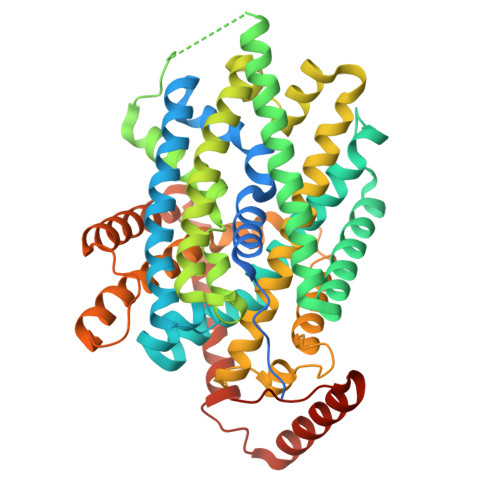Structural basis of anticancer drug recognition and amino acid transport by LAT1.
Lee, Y., Jin, C., Ohgaki, R., Xu, M., Ogasawara, S., Warshamanage, R., Yamashita, K., Murshudov, G., Nureki, O., Murata, T., Kanai, Y.(2025) Nat Commun 16: 1635-1635
- PubMed: 39952931
- DOI: https://doi.org/10.1038/s41467-025-56903-w
- Primary Citation of Related Structures:
8KDD, 8KDF, 8KDG, 8KDH, 8KDI, 8KDJ, 8KDN, 8KDO, 8KDP - PubMed Abstract:
LAT1 (SLC7A5) transports large neutral amino acids and plays pivotal roles in cancer proliferation, immune response and drug delivery. Despite recent advances in structural understanding of LAT1, how it discriminates substrates and inhibitors including the clinically relevant drugs remains elusive. Here we report six structures of LAT1 across three conformations with bound ligands, elucidating its substrate transport and inhibitory mechanisms. JPH203 (also known as nanvuranlat or KYT-0353), an anticancer drug in clinical trials, traps LAT1 in an outward-facing state with a U-shaped conformer, with its amino-phenylbenzoxazol moiety pushing against transmembrane helix 3 (TM3) and bending TM10. Physiological substrates like ʟ-Phe lack such effects, whereas melphalan poses steric hindrance, explaining its inhibitory activity. The "classical" system L inhibitor BCH induces an occluded state critical for transport, confirming its substrate-like behavior. These findings provide a structural basis for substrate recognition and inhibition of LAT1, guiding future drug design.
Organizational Affiliation:
Department of Structural Biology, Max Planck Institute of Biophysics, 60438, Frankfurt, Germany. yongchan.lee@biophys.mpg.de.




















